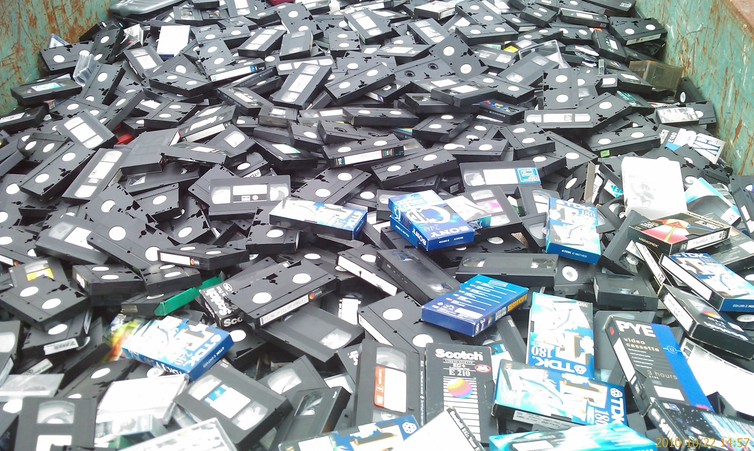By Marc C-Scott/The Conversation
I grew up with video cassette recorders – VCRs. I still remember rushing off to the the video store to rent the latest movie, hoping that there was at least one copy still on the shelf that didn’t have the “Sorry I’m Out” tag placed in the cover.
In 2001, despite the emergence of DVDs, the portfolio for my undergraduate degree application was sent on VHS. That’s all they accepted.
I still have a cupboard full of VHS tapes – films I purchased as well as my own video work. But now, viewing these tapes will become far more difficult.
The last manufacturer of VCRs, the Funai Corporation of Japan, stopped manufacturing at July’s close.
 Rob Pearce/Flickr, CC BY
Rob Pearce/Flickr, CC BY
*
You could be forgiven for thinking that the manufacturing of VCRs had already ceased.
Funai cites the decline in VCR sales and the difficulty of finding the required parts to manufacture them. That said, 750,000 units were sold worldwide in 2015, hough that pales compared to Funai’s sales of 15 million per year when the VCR’s popularity peaked.
The end of VCRs comes only a year after news that Sony would stop the manufacturing of Betamax, a tape format that had a long battle with VHS.
While recording television on magnetic tape might seem primitive by today’s digital standards, we should acknowledge that the humble video cassette recorder had a tremendous impact on both the media industry and how we consume media.
Moreover, there are some striking parallels between the impact of VCRs a few decades ago and the impact of digital technologies, like on-demand video and TV catch-up services, today.
Rewind
The first tape recorder is reported to have been developed by Ampex Electric and Manufacturing Company in 1956: the Ampex VRX-1000. Later this same year, CBS in the broadcast the first delayed program using the Ampex Mark IV.
Prior to tape recording technology, most television programs were broadcast live with no recording or archiving. Film was used for some events and broadcasts, but it was expensive. This fundamentally changed the approach of television stations, enabling them to record shows, and also to archive and re-broadcast them as repeats.
–
Fred Pfost of Ampex tells the story of demonstrating the first professional video tape recorder.
–
However, VCRs also shook up the entertainment industry in other ways. Actors and writers went on strike in 1985 over the percentage paid to them for work released on video.
VCRs were also blamed for reducing movie theater attendance and putting a damper on box-office takings over the 1985 summer season.
Between the popularity of television and the rise of the VCR, movie theaters even experimented with primitive 3D to lure audiences into the cinema. Sound familiar?
Piracy also became an issue in the 1980s, with the VCR enabling individuals to record television shows and movies, or copy them for wider distribution or sale.
Ghosting
Today if you place a VCR in front of the younger generation, you will more than likely get results like these:
But it’s worth remembering that VCRs helped to fundamentally change the way we create and consume media. They gave us a hint of what it’s like to be unshackled from broadcast timetables, allowed us to fast-forward through advertisements, enabled some to pirate and distribute movies, and started to chip into the dominance of the movie theater.
In fact, many of the issues that are pertinent today to video-on-demand and TV catch-up are echoed by the issues presented by VCRs.
–
Marc C-Scott is a lecturer in screen media at Victoria University. This article was originally published on The Conversation.
–
Comments welcome.
![]()
Posted on August 2, 2016


